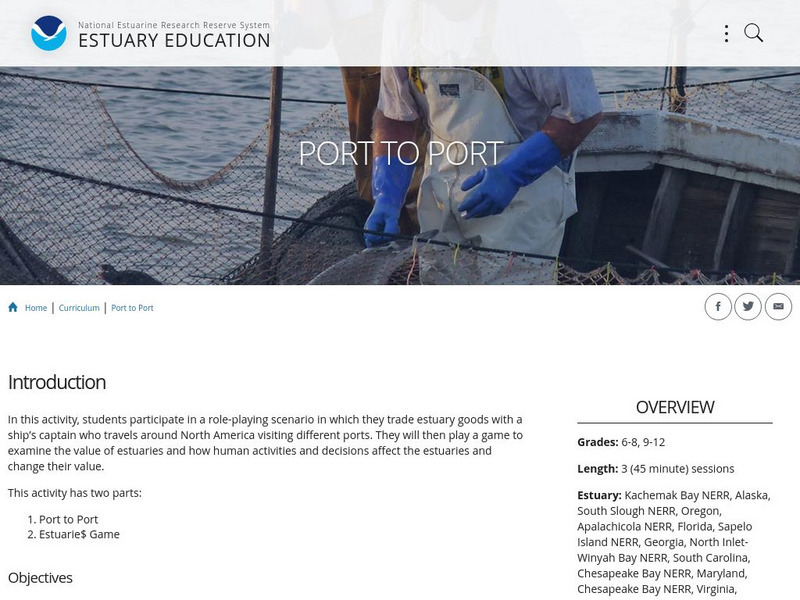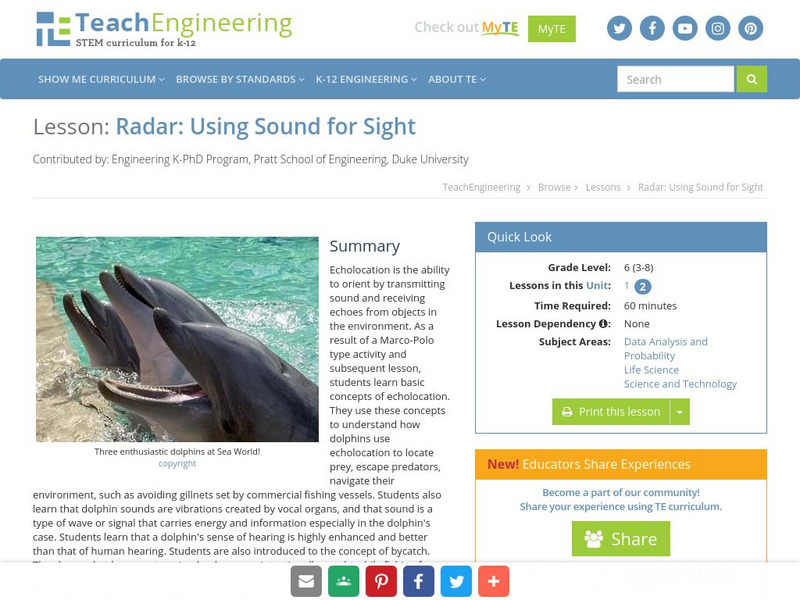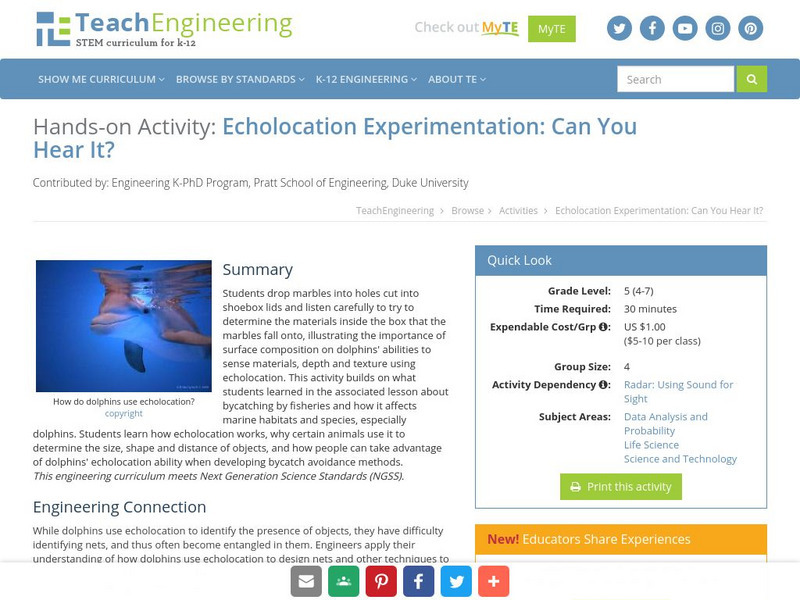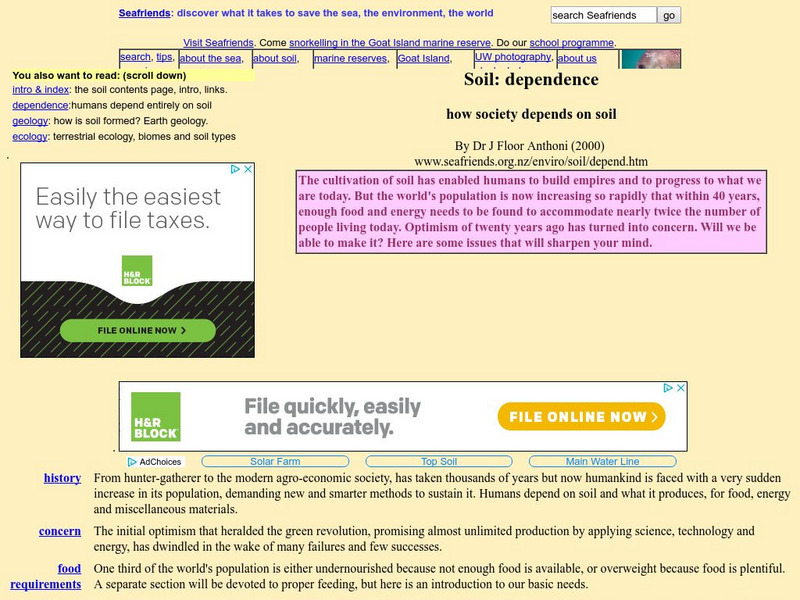Other
Virginia Department of Game & Inland Fisheries: Snakehead Identification
This site provides an interesting comparison of the snakehead to the bowfin, American eel, and sea lamprey. Pictures and facts are presented in an easily readable manner. Why should we care and what can you do are other topics explored.
PBS
Pbs Learning Media: Breathing
Breathing shows an underwater scene and asks the students to answer the question, How do the people, fish and turtle get the oxygen they need?
Other
Pollution Probe: Mercury in the Environment [Pdf]
High levels of mercury exposure can cause birth defects, permanent brain or kidney damage, and/or death. This resource focuses on the impacts of mercury in the environment. Learn how mercury can reap havoc on lakes and other aquatic...
NSTATE
Hawaii State Symbols
Learn all about Hawaii's state symbols including the state bird, flower, fish, dance, flag, and more. Click on the symbol name to see a picture and learn more information.
Smithsonian Institution
Smithsonian National Zoo
Here is the National Zoological Park right at our fingertips. Students will find many things to explore at this colorful and engaging site. Any study of animals will have a successful start here. Chances are students can catch their...
Other
Ocean Oasis: Field Guide
Ocean Oasis is a giant-screen film that depicts Mexico's Sea of Cortes and the Baja California desert. This companion site features much of the information the film has, such as beautiful images of animals, water, and land that have...
US Fish and Wildlife Service
U.s. Fish & Wildlife Service: Loggerhead Sea Turtle
Read about the current status of the endangered Loggerhead Sea Turtle. This article takes an in-depth look at the conservations status and efforts underway to stop the decline in the turtle population.
Center for Educational Technologies
Nasa Classroom of the Future: Coral Reefs: Dissappearing Resource
Why are the reefs disappearing? Use this site to explore the science behind the issue. Useful at several grade levels.
Read Works
Read Works: Hook, Line, and Sinker
[Free Registration/Login Required] An informational text about the depletion of edible seafood populations. A question sheet is available to help students build skills in reading comprehension.
Biology Pages
Kimball's Biology Pages: Vertebrate Kidneys
Everything you've ever wanted to know about vertebrate kidneys. Modules include Freshwater Vertebrates, Amphibians, Lizards and Snakes, Birds, Mammals, Marine Fishes. Resources can be used as classroom notes or supplemental materials.
NOAA
Noaa: Estuaries 101 Curriculum: Port to Port
Many people depend on the estuary to earn a living. Meet a Louisiana man who makes his living by harvesting crabs and shrimp, and is worried about the health of the estuary. Includes downloadable teacher guide and student materials.
Other
Save Our Seas Organization: Home Page
Home page of the Save Our Seas Organization which seeks to protect all the oceans of the world.
TeachEngineering
Teach Engineering: Sound for Sight
Echolocation is the ability to orient by transmitting sound and receiving echoes from objects in the environment. As a result of a Marco-Polo type activity and subsequent lesson, students learn basic concepts of echolocation. They use...
TeachEngineering
Teach Engineering: Can You Hear It?
In the previous lesson, students learned about the issue of bycatching by fisheries and how it affects marine habitats. Dolphins are one of the main species affected by bycatching. While dolphins can use echolocation to identify the...
Kidport
Kidport: Who Eats What?
At this site students are encouraged to try and answer questions that relate to what animals eat. At the bottom of the web page are beautiful pictures of land and sea animals and when selected, students will be able to read short facts...
Other
Seafriends: Soil Dependence
This website looks at our dependence on soil and what it produces. It includes text, graphs, charts, illustrations and important statistics. Hosted by the Seafriends Marine Conservation and Education Center.
Environmental Education for Kids
Eek!: Habitats: Lakes
Learn why the lakes and waterways of Wisconsin are so important and about some of the aquatic animals and plants that live there.
Curated OER
Marine Studies: Symbiosis
View graphics of a mimic octopus, frog fish, snake eel, hermit crab and clown fish. Discover how they form symbiotic relationships.
Curated OER
Marine Studies: Symbiosis
View graphics of a mimic octopus, frog fish, snake eel, hermit crab and clown fish. Discover how they form symbiotic relationships.
NOAA
Noaa: Motion From the Ocean [Pdf]
Reel in some information about fish from the ocean. Then create a mobile with fish that you color.
The Franklin Institute
Marshall Elementary School: Ocean Games & Puzzles
Complete interactive word searches to find animals of the intertidal zone. Learn ocean facts by completing a crossword puzzle. Match up pieces of a puzzle to display the water cycle. And after learning all that information, test yourself...
PBS
Pbs Kids: Wild Kratts: Capture the Fishmobiles
Utilize Creature Powers to capture as many fish as you can while riding around in the ocean in miniature fish-themed vehicles called Fishmobiles. Can you keep up with the rapid, precise movements of schooling fish?














